Last Updated on February 24, 2024 by Grant
Big Bend National Park is not small. In fact, at about 800,000 acres, it is slightly larger than Rhode Island. Additionally, Big Bend is located in the southwest corner of Texas, about three hours south of Interstate 10. Basically, Big Bend NP is not a place you end up by accident. It takes time and planning to get there and enjoy a visit.
Since Big Bend is so large and remote, your visit will most likely include at least one night. There is only one main road through the park, so drive times from one side to the other are not short. While it is possible to see the highlights of the park in one day, it would be a long day. You would also likely miss some of the best parts of Big Bend: the backcountry and the short trip across the river into Mexico.
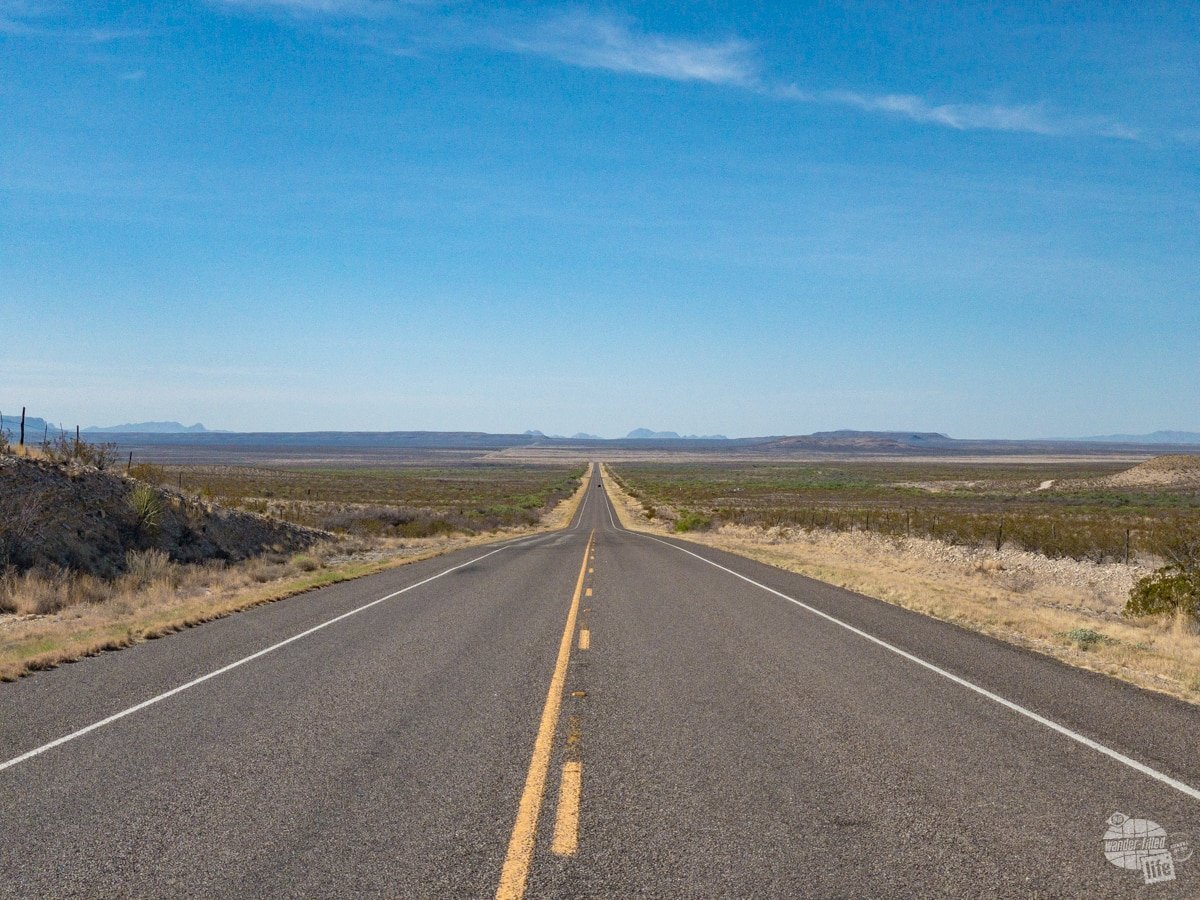
There are several options for sleeping inside the park: the lodge, three developed campgrounds and several backcountry campsites. The closest outside-the-park lodging is in Terlingua, which is about 30 miles from the center of the park. Whatever accommodation you choose, having multiple days in the park will certainly make your visit more enjoyable.
We spent four nights in the park in early April 2018. Our itinerary allowed us to see all the major sites of the park, do a bit of hiking, drive the primitive roads and experience all the different sleeping options.
(Disclaimer: When we link to places where you can buy our stuff or places we stayed, we are using special codes that earn us commissions on the sales at no additional cost to you. Please see our Review Policy for more information.)
Chisos Mountains Lodge
The only hotel in the park is the Chisos Mountains Lodge. Like many national park lodges, it is basic but adequate. Located in the Chisos Basin near the center of the park, the lodge has comfortable rooms, as well as a dining room, visitor center and small store.
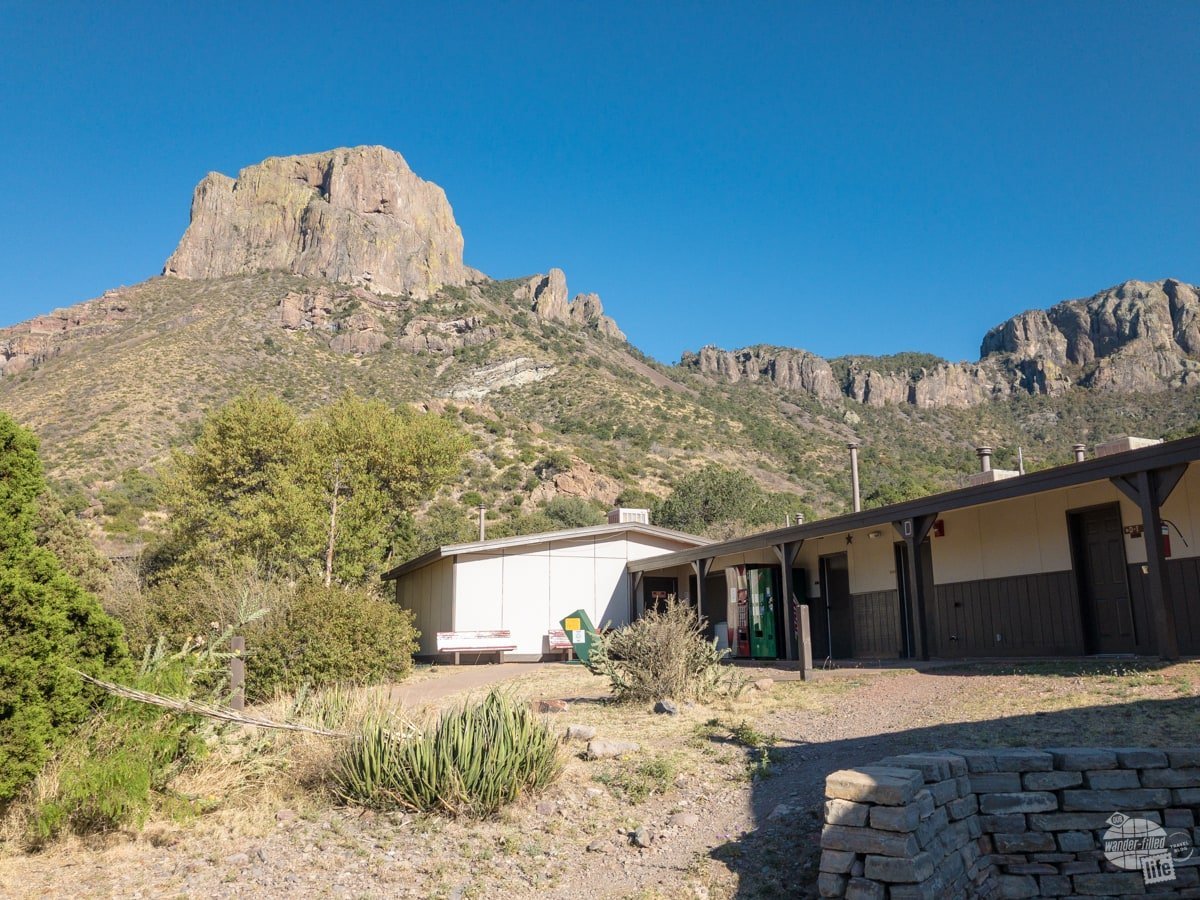
We spent our first night at the lodge, where we enjoyed a reasonably comfortable bed and air conditioning! Our motel-style room came with a mini-refrigerator and a microwave, but not many other frills. Though with a balcony overlooking the Chisos Mountains and the surrounding hiking trails, we did not miss the TV at all!
If you are not a camper, this is your only option inside the park. There are a few options in Terlingua, but you’ll have to be prepared for a bit of a drive. If you are looking for a link to accommodations in Terlingua, check the Booking.com link at the bottom of the page.
Developed Campgrounds
There are three developed campgrounds within the park that are operated by the National Park Service: Chisos Basin (central), Cottonwood (west side) and Rio Grande Village (east side). Don’t get too excited by the description “developed,” though. Chisos Basin and Rio Grande do have running water and flush toilets, but you will not find any other amenities at any of these campgrounds.
If you are traveling with a camper, check out the official Big Bend National Park website for size restrictions. All campgrounds can accommodate small campers, but you will not find hookups at any of the three above.
In particular, the drive up to the Chisos Basin Campground is restricted to trailers less than 20 feet long and RVs less than 24 feet long due to the sharp curves and steep grades.
Technically, there is a “campground” for RVs, the concession-operated Rio Grande Village RV Campground. I hesitate to even call this a campground, though. Truly, what we saw were trailers and RVs in a paved parking lot with very little space in between and no shade. I would not recommend this “campground” for anyone other than those that must have hookups for health reasons.
Cottonwood Campground
We spent our second night in Cottonwood Campground on the west side of Big Bend. This 24-site campground is located on the west side of the park, between Santa Elena Canyon and the Castolon Visitor Center.
Sites are NOT reservable, so if you are visiting in the busy-season (lat fall – early spring), you will need to arrive early to claim your site. We pulled in around lunchtime in early April and the campground was more than half-full. After receiving some advice from the campground host, we selected a site and set up camp.
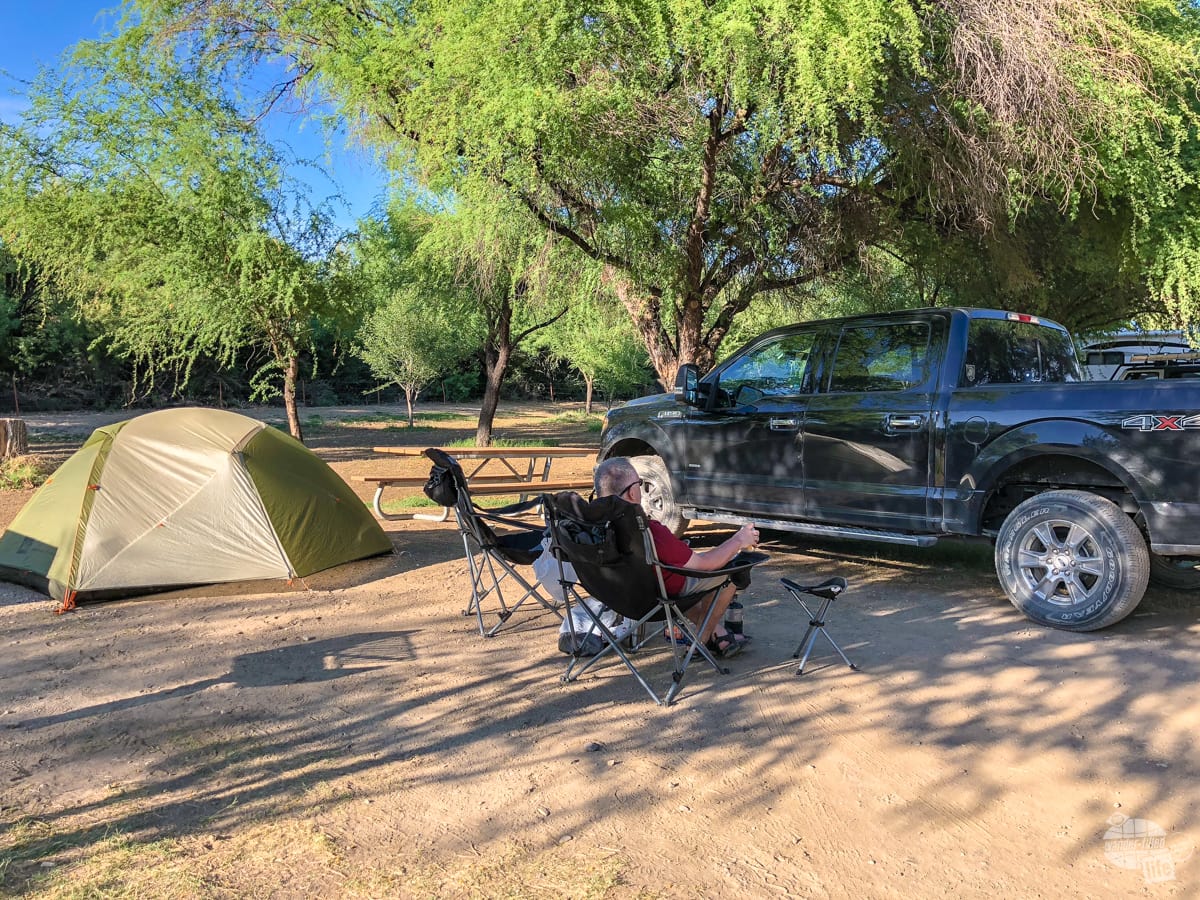
Each site has a picnic table and a grill. There are a couple of water spigots throughout for washing dishes, but potable water is found only at the campground entrance. The only bathrooms available are a few well-maintained vault toilets. While we did find a few RVs here, there is no dump station and no generators are allowed.
The cost for the campground is $14/night, payable by cash or check at the station by the campground entrance.
Campsites here are well-maintained and well-spaced. There are a decent number of trees but do consider the placement of the trees with the setting sun when choosing a site. Some sites certainly are better shaded than others.
While we enjoyed this campground, we did not truly appreciate it until after staying at the much larger and busier Rio Grande Village Campground a few nights later.
Rio Grande Village Campground
Located on the east side of the park, near the Boquillas Crossing into Mexico, is Rio Grande Village Campground. This campground has 100 sites, about half of which are reservable in the busy season. We did not have a reservation but did not have any problems finding a site during our visit.
Pro Tip: Be sure to consult the map and drive the entire campground before choosing a site. Some of the best sites are located in the back.
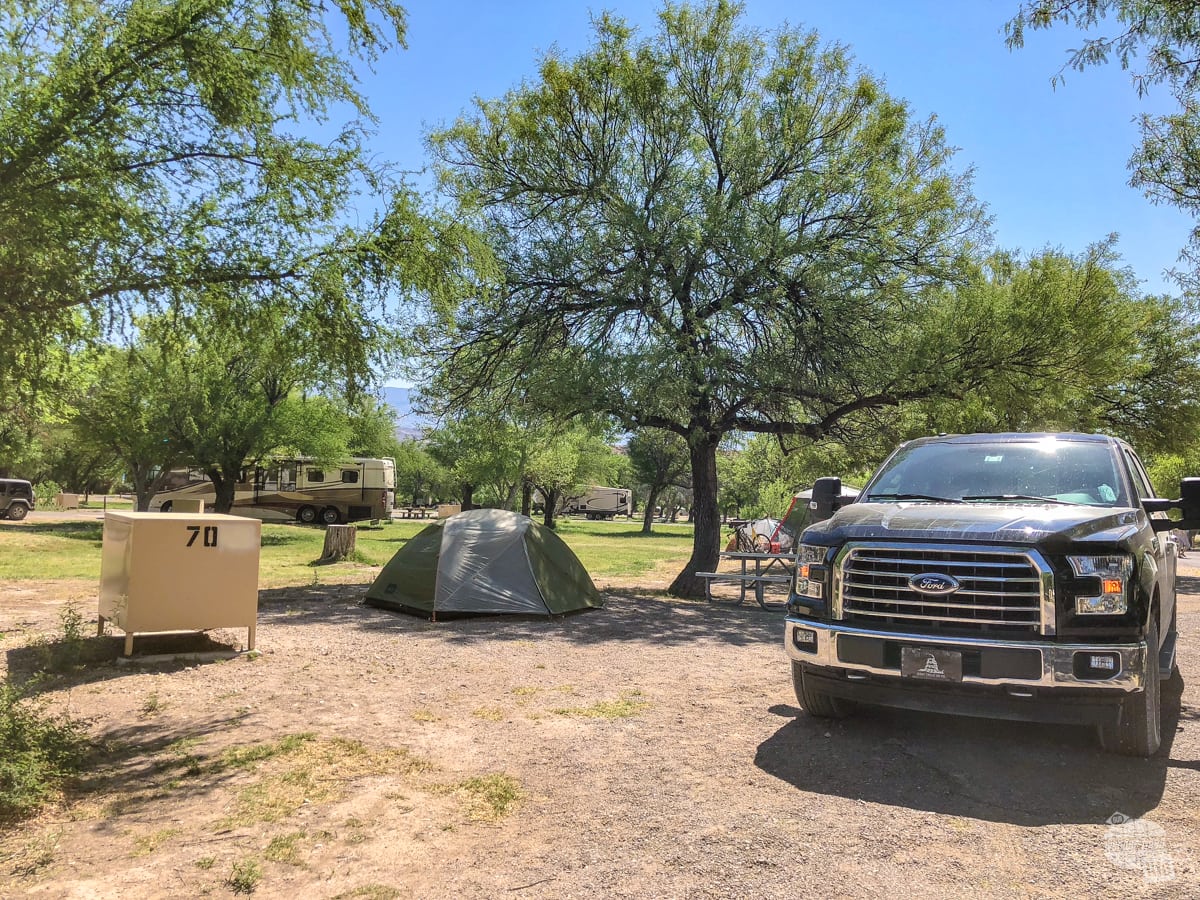
At Rio Grande Village, you will find bathrooms with flush toilets and sinks. There are still no hookups, but sites are fairly large and reasonably well-spaced. Pay showers are located nearby at the convenience store and gas station.
One perk of this campground is the nature trail at the back. We did not have time to walk the entire trail, but just the first few hundred yards cross a wetland before a short climb to an overlook. We followed the advice of the NPS website and enjoyed the sunset on this trail our last night. It definitely was not a bad way to end our visit to Big Bend!
The one downside of Rio Grande Village Campground is the crowds and noise. Noisy neighbors are a possibility at any campground, but it seemed especially bad here. I suppose the size and location of the campground contributed to that.
Again, towards the back, there are several sites that seem to be a bit more private. Snag one of those if you can.
Backcountry Camping
While there are only three developed campgrounds, there are MANY primitive backcountry sites available. If you can handle the solitude and wilderness of a backcountry site, you will find yourself in sleeping in some of the best parts of Big Bend NP.
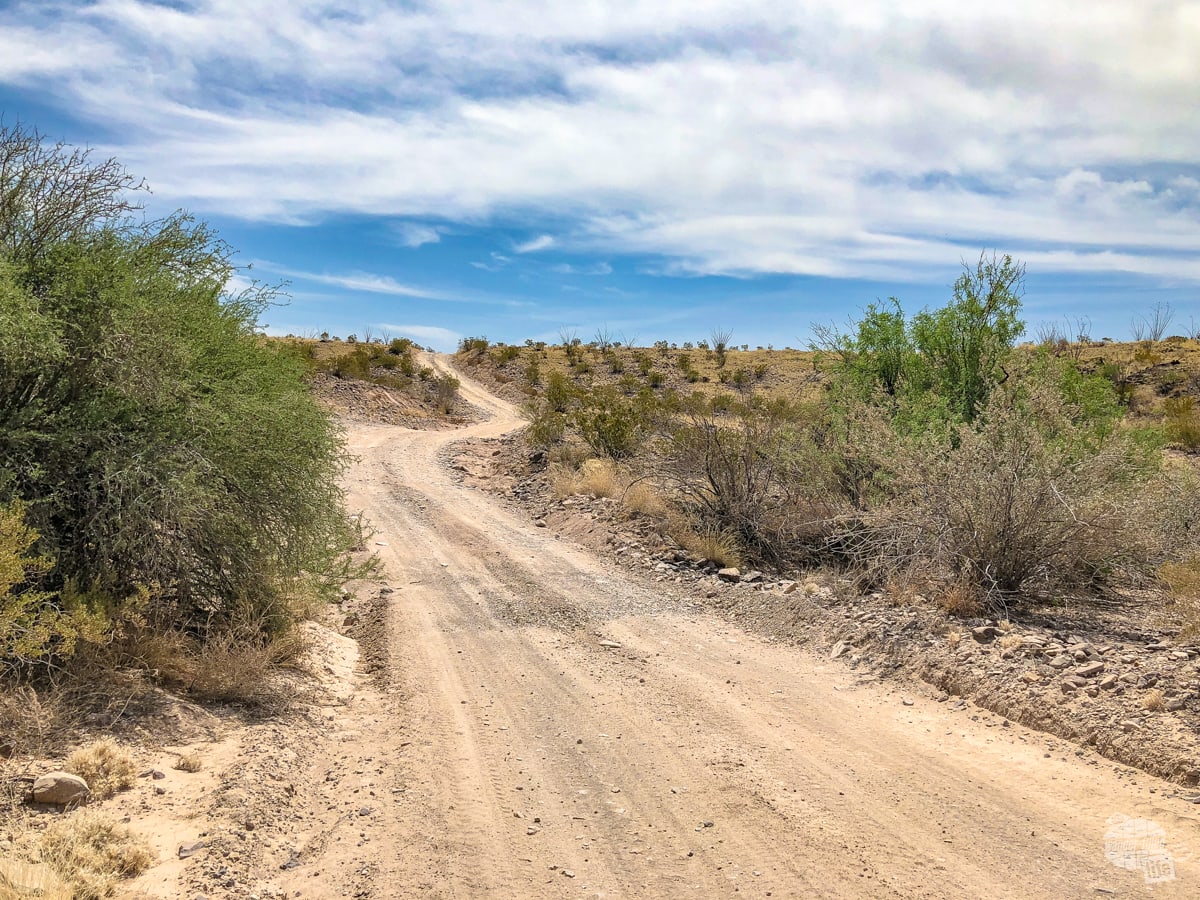
Many of the backcountry sites are located off the primitive roads. These sites are perfect for those of us who want to experience the backcountry, while still car camping. If you are hiking, you will also find primitive sites along the Chisos Basin and other trails.
We saw several different backcountry sites while driving the primitive roads. Some were more private than others, but all were large and well-maintained. If you are camping with a group, one of these sites would be perfect. The solitude allows you to have some fun but not have to worry about disturbing your neighbors.
Treks Southwest provides a great overview of many of the backcountry sites at Big Bend. We already knew we wanted to camp along River Road. This website helped us to choose the best site for us. Remember, some of the primitive roads of Big Bend require four-wheel drive, so before choosing a site, make sure you can drive the road to get there!
Securing a Permit
Backcountry camping in Big Bend National Park does require a permit, which can be obtained no more than 24 hours before your first night. You will need to visit the Panther Junction Visitor Center, in person, to secure your permit.
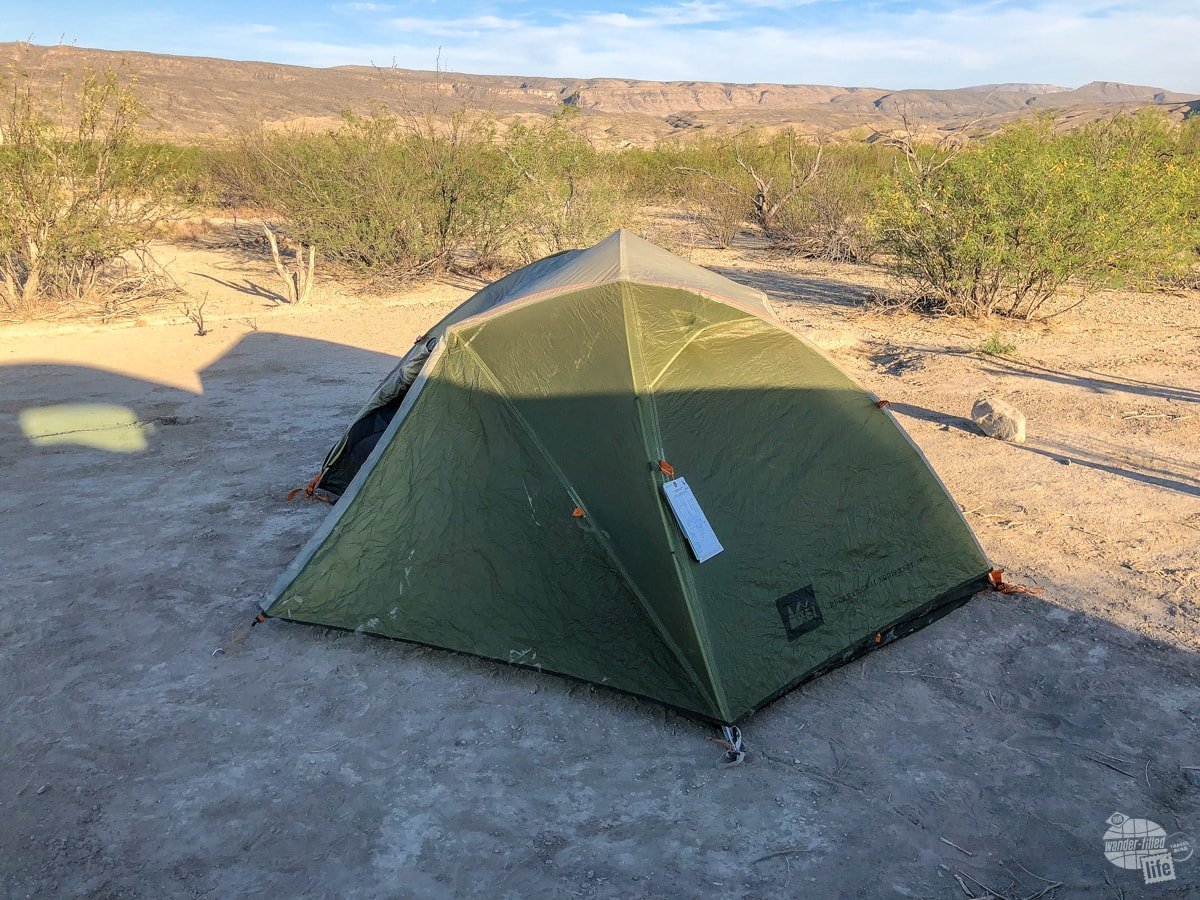
In the busy season, you will no doubt need to line up early. I would also suggest having a couple of backup options, just in case the site you want is already spoken for.
We visited the first week of April and did not have any problems getting the site we wanted. Temperatures were already reaching the mid-upper 90s along the river, so sites in that area were not in high demand.
The rangers will give you basic information about each site but it would be wise to do your homework in advance.
Solis 2
Our backcountry camping experience was along River Road, at Solis 2. If you have a vehicle that can drive River Road, there are many sites to choose from. Based on our itinerary, we knew that we wanted to camp on the east end. After much consideration, we chose Solis 2.
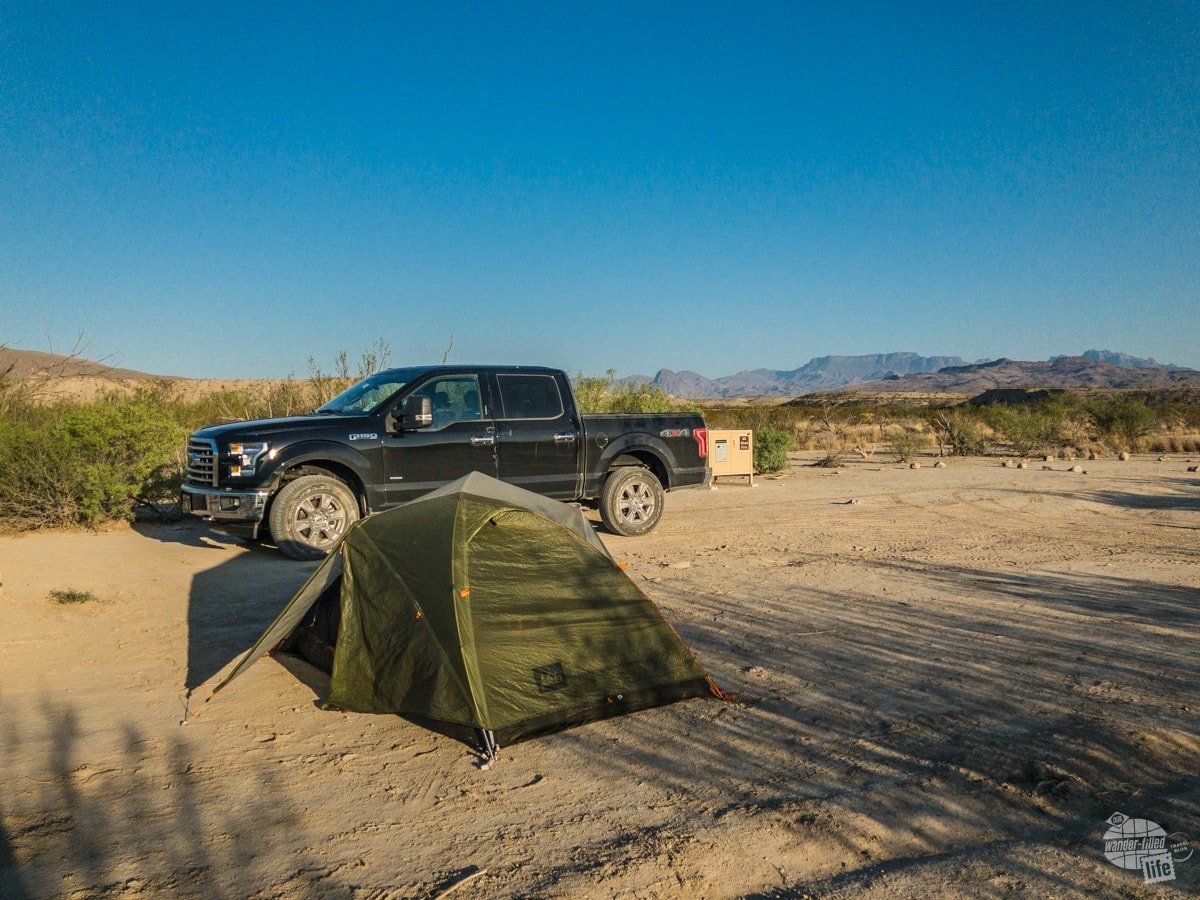
Located well off the main road, not too far from the Rio Grande, Solis 2 was the perfect balance of privacy and easy access. The river provided a bit of shade on a warm afternoon. We even got to watch some of the wild horses cross between the US and Mexico.
The campsite was large, with plenty of room for the truck and tent. In fact, most of the drive-up sites will fit accommodate two or three vehicles and at least 10 people.
We enjoyed our afternoon in the shade by the river, then set up camp once the sun was low and the temperatures were moderate. For dinner, we used our quick stove to boil some water and prepare a tasty backpacker meal of Pad Thai.
After dinner, we enjoyed the sunset while reading. With no noise and no disruption, it really was the perfect way to end the day.
After dark, the vastness of the night sky kept us occupied, even without TV or any other amenities. And Grant had the perfect setting for some night photography.
Read more about driving the dirt roads of Big Bend here.
Primitive Camping
This was our first time primitive camping in many years. There were a few overnight noises that put me a bit on edge, but overall we both enjoyed the solitude and privacy of the backcountry.
Yes, we did have to create our own bathroom…that definitely is a part of primitive camping. Thankfully, we did not have to worry too much about privacy as I doubt there was a single person within more than 10 miles of us!
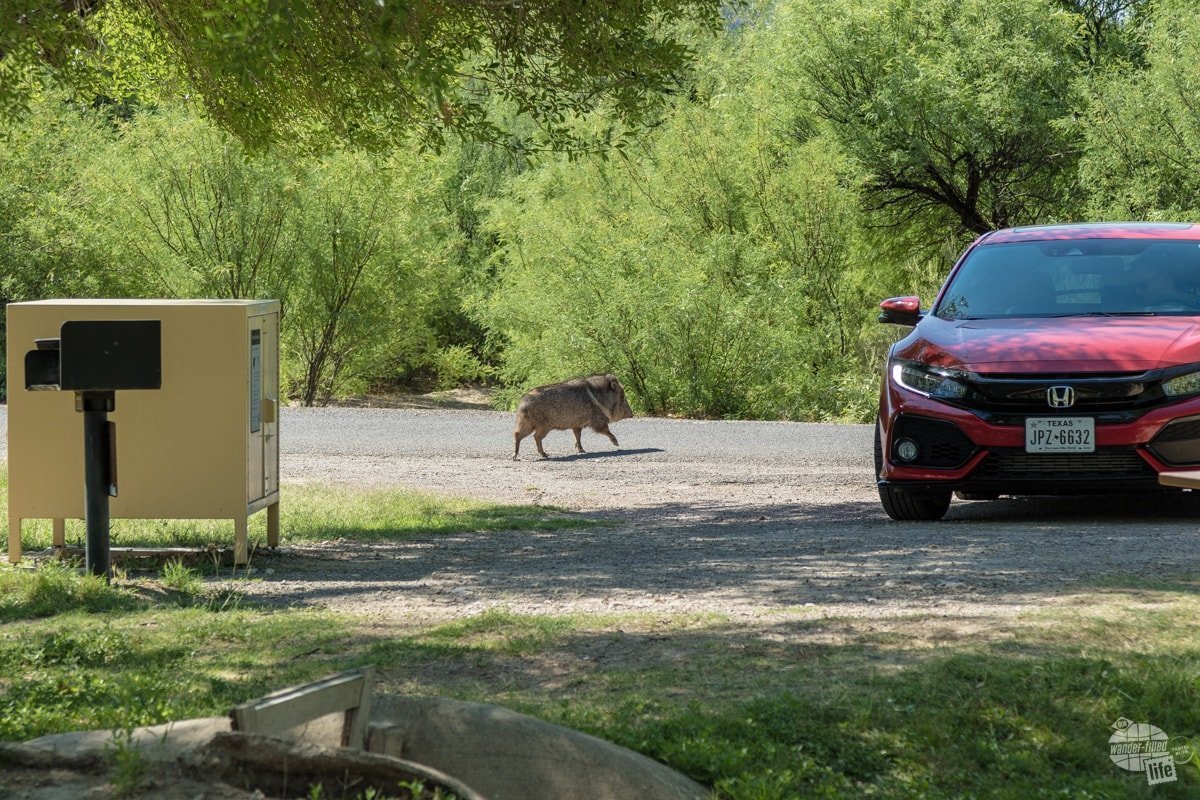
The campsite did provide a “bear box” for storing food and trash, which is a must in this area of the world. While the only animal we saw was a jackrabbit, we did hear some burros.
Javelinas also populate the park and are something to be concerned about while camping. Ironically, the only one we saw was not in the backcountry, but at Rio Grande Village Campground.
If you are a tent camper, I strongly encourage you to spend at least one night in the backcountry. This was definitely an experience we will not forget.
Read more about our four days in Big Bend here.
Choosing Your Accommodations
For those of you who enjoy camping, you will have many options to choose from at Big Bend NP. If you require a bed and air conditioning, the lodge is your only option inside the park.
The Chisos Basin area of the park is centrally located, with moderate temperatures, making it a good option for camping. But, if you are looking to visit Mexico or drive River Road, it may not be the best location for you.
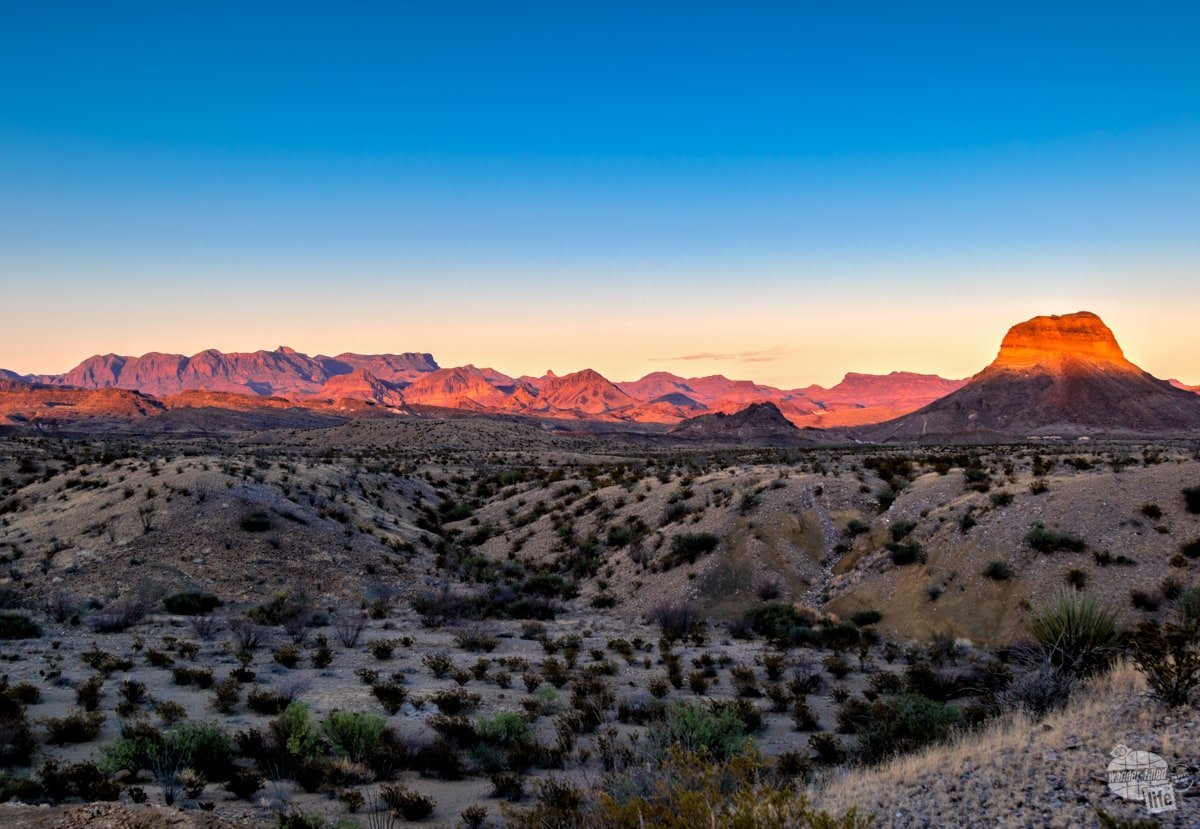
We chose to move around each night because that made the most sense based on our itinerary. You may prefer to stay in one place for several nights. If that is the case, just be prepared to do a bit of driving. And be sure to consider that the speed limit within the park is 45 mph.
If you want a room at the lodge, be sure to make reservations early, especially if you are visiting during the busy season. As mentioned earlier, you can make reservations at Rio Grande Village Campground, during part of the year. Again, plan ahead and make reservations well in advance.
Big Bend NP has a lot to offer those who are looking for wilderness and solitude. Even in the shoulder season, the park felt nearly empty. Whatever you choose, we are sure that you will enjoy your visit.
Travel Resources
What do you use to find a flight?
We use Skyscanner to find deals on flights. Skyscanner has a great interface and compares tons of airlines for the best pricing and routing. That said, it does not always have every airline and some airlines will have better deals on their website. Still, Skyscanner is a great place to start.
Click here to search for a flight.
What do you use to find a hotel?
We typically stay at Hilton properties, so we use the Hilton website. You can find good Hilton Honors discounts or AAA discounts for a hotel there. We make great use of our free night certificates from our Hilton Honors American Express.
Click here to book a Hilton property.
If there are no Hilton properties available, we use TripAdvisor to read reviews and book the hotel. We find we can get the best price that way.
Click here to search for a hotel.
We recently partnered with Stay22 to add interactive maps to each of our destination posts. This will allow you to see a plethora of hotels and vacation rentals all in one responsive map of the area.
What if I need more space than I can get at a hotel?
We use Vrbo for the times when we have rented a cabin for a weekend getaway, like this cabin in Townsend, TN, or needed to rent a house for a large family vacation. We had a great experience with them in terms of refunding deposits when COVID hit and will continue to use them.
Click here to search for a vacation rental.
Who do you use for rental cars?
As a general rule, we book with Hertz for rental cars. We have had nothing but good experiences with them. Plus, we really like unlimited mileage and not worrying about crossing state lines. We have even rented from Hertz overseas in both Slovenia and Croatia.
Click here to book a rental car.
How about booking a cruise?
We have found some amazing prices for booking a cruise through Cruise Direct. We have saved a lot of money on our cruises compared to what we found elsewhere, making a last-minute Bahamas cruise even cheaper.
Click here to book a cruise.
What if I want to rent an RV?
We highly recommend Outdoorsy for RV rentals. We rented a camper van for a week to visit Rocky Mountain National Park for the elk rut and Custer State Park for the Buffalo Round-Up and had a blast. The program was easy to use and we really enjoyed the freedom of having a camper van for that trip.
Click here to rent an RV.
What do you use for booking tours?
We don’t often book tours. Typically, we like to do stuff on our own. That said, there are some experiences you can’t have any other way. So, when we do want to book a tour, we always check Viator first.
Click here to book a tour.
Do you use anything to get discounts on the road?
We make extensive use of both Good Sam and AAA on the road. Good Sam is normally regarded as a discount card for RVers at campgrounds and Camping World but anyone can use the 5 cents off a gallon at the pump at both Pilot and Flying J.
Click here to get a Good Sam membership.
We have had AAA as long as we have been married and it has more than paid for itself in discounts at hotels, aside from the peace of mind of having roadside assistance. Add in paper maps and the ability to get an international driver’s license and it is more than worth it for any traveler out there.
Click here to get a AAA membership.
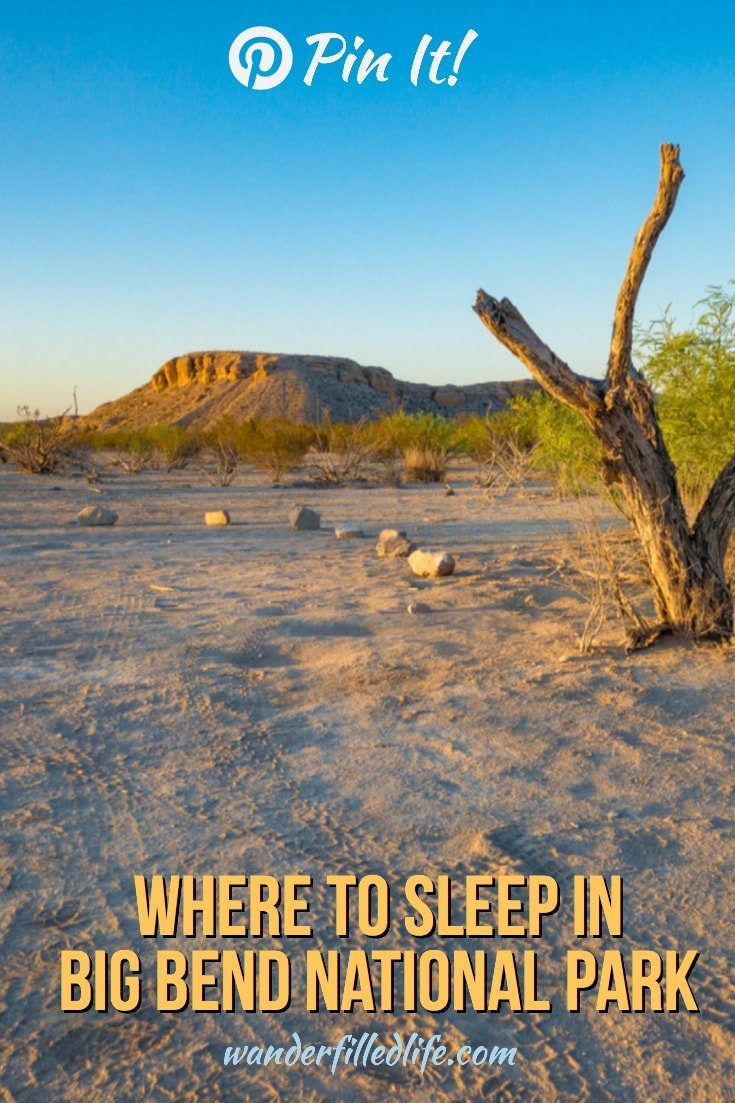

Thanks for all the advice!! Do you think it gets cool enough at the end of May to sleep in a car instead of a tent? And do you know know if that’s allowed?
Stacy,
Depending on where you are looking to camp, I would say no. The Chisos Basin Campground would be cool enough but everywhere else will be quite warm (90s+). You can camp in your car but it must be in a campground. You can’t just pull off the road and sleep in your vehicle.